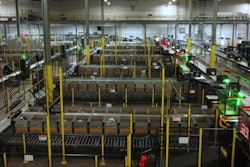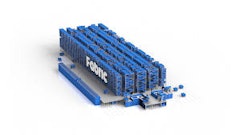
Three consecutive years of freight recession pressure has dampened sector deal activity, according to new research released by Capstone Partners. However, the warehousing and fulfillment market has benefitted from less reliance on freight rates compared to third-party logistics (3PL) providers. And, those focused on e-commerce channels will likely see tailwinds from continued growth in online shopping.
Key takeaways:
· Warehousing and fulfillment market M&A activity in 2024 was a bright spot compared to broader transportation and logistics (T&L) industry deal flow, with volumes rising 19% year-over-year (YOY) to 50 transactions announced or closed. Less reliance on freight rates among warehousing and fulfillment providers helped buoy sector M&A activity while T&L industry deal flow remained plagued by low freight rate pressure, falling 6.7% YOY.
· Rising M&A activity was underpinned by sponsor-backed buyers that reinvigorated roll-up efforts as interest rates started to fall. Add-on transactions increased 125% YOY, from eight deals in 2023 to 18 in 2024. However, sector revenue pressure from the low freight rate environment has continued to create buyer wariness—muting strategic buyer interest and new platform formations in 2024 and into 2025.
· Looking ahead, easing sector pressures and continued rate cuts will likely revitalize warehousing and fulfillment market M&A activity.
· While e-commerce fulfillment segment M&A activity has continued to trail levels reached in 2021 and early 2022, underlying sector growth remains strong. In 2024, segment deal volume rose 52.3% YOY in 2024, but M&A of underperforming assets was a significant driver of this activity as participants continue to grapple with margin pressure amid a prolonged environment of sector overcapacity. However, long-term e-commerce growth tailwinds and a fragmented market will likely continue supporting segment M&A activity in the long-term, particularly as participants look to invest in technology and optimize regional networks through acquisitions.
· Despite improved outlook from rising e-commerce spending tailwinds, uncertainty around trade policy, and ensuing economic headwinds have weighed on sector sentiment, investment, and deal activity into 2025. Flexibility will remain paramount for the warehousing and fulfillment market as providers attempt to diversify operations away from tariff target regions and potentially bring supply chains more onshore. In the long-term, accelerated tariff-driven manufacturing onshoring will likely act as a tailwind for sector investment. The uncertainty-driven economic headwinds will likely be the predominant force affecting sector investment and deal activity in the foreseeable future.

















